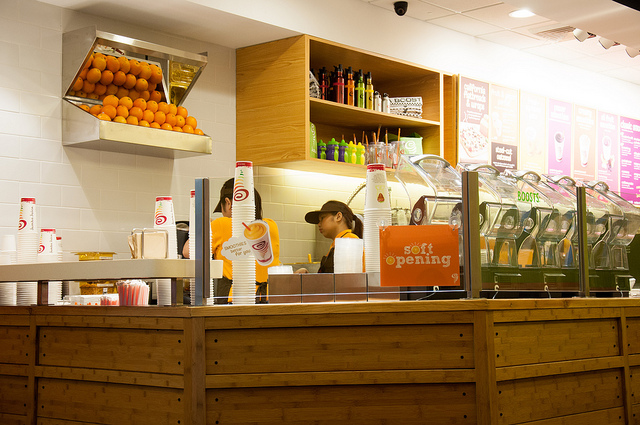 Author: Ben Dickey, BSG&L Financial Services LLC
Author: Ben Dickey, BSG&L Financial Services LLC
Covestor models: Pure Growth and Growth Plus Income
The U.S. economic growth for the first quarter final revision was released unchanged at 1.9%. The economy appears to be slowing at a faster rate than before. Jobless claims are higher and employment gains have been smaller over the last few months.
The June employment numbers, which will be released on Friday, are expected to be below 100,000 jobs generated. It takes 150,000 jobs per month to keep up with population growth.
Oil prices have fallen about 20% over the last two months. The majority of the price decline is due to the strengthening dollar which is due to the drop in the value of the Euro, which is based on the continuing European sovereign debt problems. The first of several new pipelines from Cushing, Oklahoma to the Gulf Coast refineries has begun shipping crude oil to be refined. This should allow West Texas Intermediate (WTI) prices to begin approaching Brent prices. All of the buildup in crude oil inventories at Cushing has been causing an abnormal price differential between WTI and Brent. With approximately forty four million barrels of crude in storage with limited ability to ship it out, until now, the WTI price was being bid down. We still import about nine million barrels per day of our 15 million barrel need, at Brent prices, which keeps our gasoline prices higher.
I still believe oil prices for WTI will close out the year in the $100 to $110 per barrel range. The International Energy Agency has projected world demand for oil to increase about 1,000,000 barrels per day between now and the end of the year.
Our economy is being impacted by the European debt troubles. In addition, the U.S. is facing a multitude of tax increases and government spending cuts starting next January. As a result, market sentiment has turned extremely pessimistic. Also, with the Supreme Court decision on health care, small and medium sized companies have even more worries over their cost structure going forward. I do not believe that these companies will have a much clearer understanding of the solutions until after the election in November. However, all is not doom and gloom with the U.S. economy. It is still on an upward trajectory, although only slightly, reflecting the less than 2% growth rate.
There are several positive market segments doing real well. Major technological advances in the oil and gas industry have allowed the U. S. to increase its oil production for the first time in over twenty years. A large percentage of the employment gains in the U.S. have been in the oil and gas industry. The decrease in natural gas prices is lowering the cost to manufacturing companies. Utilities, where they are able, are changing from coal to natural gas for electricity production. This should help lower utility costs, helping the U.S. economy.
In addition, the increased production of natural gas liquids such as ethane, propane and butane has lowered the input costs for the chemical industry. As a result, chemical companies are moving production back to the U. S. from overseas which is causing plants in the Gulf Coast to expand capacity at a strong clip. New pipelines are under construction which will bring production from the Eagle Ford and Marcellus Shale to the gulf coast. The lower transportation cost provided by the new pipelines instead of the previous transportation modes should make the U.S. chemical industry even more competitive. This should help reduce the balance of trade deficit and add jobs.
In addition, for every one million barrels of daily output increase, our balance of trade imbalance drops by $40 billion per year. Kinder Morgan and Enterprise Products are expanding their current pipelines and will move more oil to our U.S refineries, thus reducing our balance of trade cost and putting people to work.
A much larger potential impact on the balance of trade and jobs is the exporting of natural gas. Natural gas in the U.S. is trading around $2.90 per million Btu’s, however that same gas is trading around $16.00 in Asia and $13.00 in Europe. There are several current LNG projects underway for completion in 2015 and several major oil companies are considering even more projects.
Emerging market economies have slowed, but still have a growth of mid to upper single digits. China and India have each doubled their economies over the last 10 years. As economies become larger, it is almost impossible to keep up double digit growth. However, an eight percent growth rate in their now trillion dollar economy is more output increase than the twelve percent growth rate that they had enjoyed over the past ten years. We are in agreement with those economists that are predicting that the countries will be able to continue their high single digit economic growth rates.
We believe our equity markets have approached a very oversold condition. Fear has trumped fundamentals in the market. Oversold markets are like a tight rubber band. As fear subsides, the market will snap back. The last trading day of June has been a perfect example. However, we try not to let these market gyrations impact our daily investment decisions.
BSG&L has a long term horizon. These beliefs cause us to stay with an overweighting in our basic portfolio allocation to industrials in our Growth Portfolio. We like Caterpillar (CAT), Deere & Company (DE), Honeywell International (HON), United Technologies (UTX), Emerson Electric (EMR), and Cummins (CMI) in the industrial sector.
In the energy service sector we like Helmerich & Payne (HP), Cameron International (CAM), Halliburton (HAL), Mitcham Industries (MIND) and Schlumberger (SLB). Our commodities and energy holdings have changed very little.
We continue to like Continental Resources (CLR), Anadarko Petroleum (APC) and EOG Resources (EOG) in energy. We sold GeoResources (GEOI) since they received a buyout offer at a price that gave us a good profit for the short time we held it.
In industrial commodities we like Peabody Energy (BTU), Freeport-McMoRan Copper & Gold (FCX), Cliffs Natural Resources (CLF), Vale S.A. (VALE), and Southern Copper (SCCO).
As I stated earlier, fear has overcome fundamentals. The coal markets are a good example. To replace all the coal fired utilities in the U.S. with natural gas fired plants would require over $700 billion. This is many times the market capitalization of all the utilities in the U.S. India has over 300 million people with no electricity and Japan is dramatically increasing coal purchases as they shut down their nuclear power plants. Coal currently supplies over 40% of the electricity in the world, and we believe that will only increase going forward.
As we have been saying for quite a few months now, the pipeline companies and commodity MLPs are experiencing tremendous growth, though their stock prices have been impacted by the drop in oil and natural gas prices. We think this is an excellent time to add to these positions for the long term increases in stock price and distribution amounts that we think are coming. As a result, in our Growth and Income portfolio we continue to add Kinder Morgan Energy Partners (KMP), Linn Energy (LINE), Enterprise Products Partners (EPD), SandRidge Mississippian Trust (SDT) and SeaDrill Limited (SDRL). These companies have good dividend rates of between 6% and 10%.
We are light in the Technology sector, but like Amazon.com (AMZN), Apple (AAPL) and International Business Machines (IBM). We have recently added Broadcom (BRCM) and QUALCOMM (QCOM) to our technology holding. They are a major supplier to Apple for chips in mobile devices.
Just to restate, I believe the European debt problem and the upcoming U.S. elections have us concerned about market activity for the rest of this year. Hedging this volatility, in my opinion, will be hard. Gold last year was as volatile as the stock markets. I believe copper and oil will be the inflation hedges going forward. Otherwise, the only way to reduce volatility in your portfolio is to add some consumer staples with good dividend streams.
However, if you are a long term investor, the aforementioned sectors could prospectively allow an investor to outperform the markets with a somewhat reduced amount of volatility for the foreseeable future.


